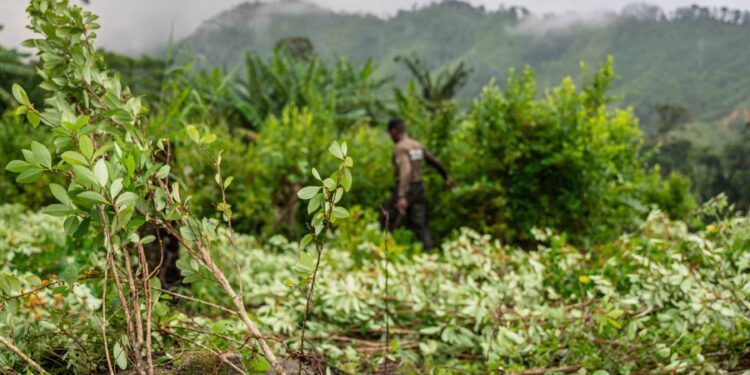Photo credit: Fritz Pinnow
McSweeney and colleagues have published an article in the journal Environmental Research Letters examining the recent and growing appearance of coca leaf cultivation in Central America, a crop historically associated with the Andean region. McSweeney and Pinnow discuss the environmental and market conditions driving coca cultivation in Honduras and Guatemala. They note that those attempting coca cultivation in the region have competitive advantages over Colombian growers, such as more favorable growing conditions.
They stress that it would be a serious error to respond to this phenomenon with another forced eradication program. Past crop-eradication strategies, which have almost always been uncoordinated with governance, rule of law, basic services, land formalization, or anti-poverty efforts, have failed and in fact ended up encouraging the planting of coca in new areas.
The drug trade, McSweeney and Pinnow state, gains much of its power and wealth from the price premium made possible by the coca plant’s illegality. The inflated prices make it very difficult to offer viable economic alternatives in poor rural areas. “Current drug policy,” McSweeney says, “systematically undermines any other efforts at rural or urban development in these countries.”
“If we’ve learned anything from supply side drug control in South America, it’s that eradicating coca crops and trying to shut down trafficking organizations, and trying to shut down the cartels, and trying to go after the Pablo Escobar’s and their successors– it generates a lot of Netflix content, but it doesn’t do anything to reduce the amount of drugs that make it into the United States and other countries… What we’ve seen from these approaches and after 40 years of the drug war and billions of dollars spent to eradicate the cocaine trade is more coca being produced in Colombia than ever before, more places with coca being produced, the price of cocaine is lower than it’s been in decades, the quality of the cocaine is the highest it’s ever been, and it’s easier to get than it ever was before.”
To stay engaged with drug war reform, McSweeney and Pinnow recommend connecting with Students for Sensible Drug Policy (SSDP) and The Centre for the Study of Illicit Economies, Violence and Development (CIVAD).
Download this podcast episode’s .mp3 file here. Listen to WOLA’s Latin America Today podcast on Apple Podcasts, Spotify, iHeartRadio, or wherever you subscribe to podcasts. The main feed is here.
Source link : http://www.bing.com/news/apiclick.aspx?ref=FexRss&aid=&tid=66e9bc130ec346b6ab007e186d7514f5&url=https%3A%2F%2Fwww.wola.org%2Fanalysis%2Freimagining-the-drug-war-amid-rising-coca-cultivation-in-central-america%2F&c=13021245469868440301&mkt=en-us
Author :
Publish date : 2024-09-17 05:24:00
Copyright for syndicated content belongs to the linked Source.












